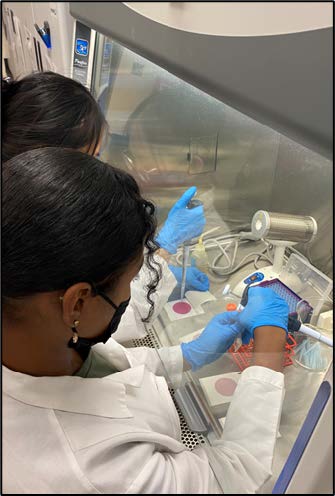Support Page Content
ALEs in Action
SCIURUS CURIOUS
Professor Susan Ramones, Biology, Spring 2022
In the Fall 2021 semester, Professor Susan Ramones from American River College incorporated into her non-majors General Biology course an authentic research experience in behavioral ecology. The subject? Field observations of the family Sciuridae, known to most of us as squirrels. With help from Squirrel-Net, a national teaching resource and data repository, Ramones designed a three-part lab experience in which students independently gathered field data on squirrel behavior, formed and revised hypotheses relating environmental conditions to observed behavior, tested these hypotheses using shared national data from Squirrel-Net, and presented their findings in a final write-up.
In addition to giving the students an opportunity to put on their field hats and collect real-world data, Ramone’s authentic learning experience (ALE) provided students with direct exposure to “some of those nebulous parts of science and the scientific method that are hard to convey.”
Many of students’ initial hypotheses didn’t align with the data that was actually collectable by them and available to them online; students learned first-hand that a hypothesis supported by the behavior of one squirrel may not actually be supported when tested against thousands of data points; and they learned that being wrong is okay, that a hypothesis often produces more questions than answers and then you start all over again.
In a course that was entirely asynchronous and online, students also learned the value of collaboration and working together. Ramones used online discussion groups, a tool that had not worked as well pre-ALE, to help students consider and revise their hypotheses, and found that not only did the hypotheses improve, stronger relationships formed and led to a classroom community that lasted throughout the semester. “The Squirrel-Net one is a good conversation … there's really something to discuss. And so it creates some relationships at the very beginning of the semester … it's helping sort of set up that community.”
So what are the big takeaways for students from this experience? “The biggest thing they seem to take away from it, is how important peer review is and how much it helps [them] come up with a better hypothesis. Because you talk to other people about it.” And of course, there is the unbridled joy of watching squirrels: “It's hysterical. And the students love it, like every single student.”
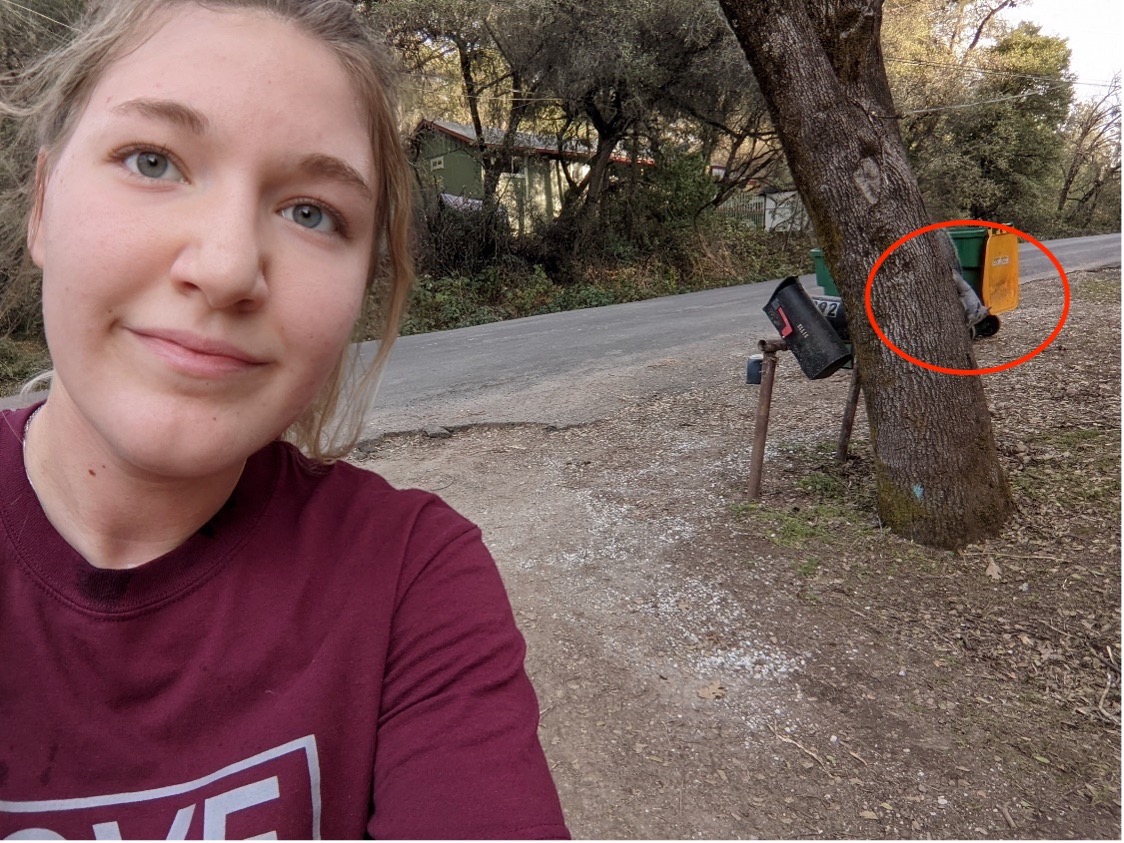
DATA MANAGEMENT FOR THE REAL WORLD
Professor Anna Klimaszewski-Patterson, Geography, Spring 2022
We live in a world that is flooded with information. Not all of this information is interesting, relevant, or helpful. But sometimes information that is useful just needs to be organized in a way that makes it accessible and useable for others. Enter Professor Anna Klimaszewski-Patterson of the geography department at California State University, Sacramento (CSUS). Last fall, Klimaszewski-Patterson implemented a new course–GIS Data Acquisition and Management–designed to give students real-world skills and experience in acquiring, organizing, and storing datasets, with the end goals of creating datasets that are functional and accurate while giving students experience tackling the types of assignments they will face in the workforce. In addition, Klimaszewski-Patterson wants to create a central database, housed at CSUS, that can be used by participants in the SIRIUS II project to store data from their many different projects, and as a resource for instructors as they continue to create, implement and expand their own authentic learning experiences (ALEs).
Klimaszewski-Patterson’s ALE had two components for students. First, students were divided into three groups, each asked to come up with a folder organization structure for the future SIRIUS II database. Second, students were tasked with creating data collection forms for a hypothetical external course. These assignments were real-world projects that served as the backdrop for teaching students to use tools of the trade such as Microsoft Access, ArcGIS Collector and ArcGIS Survey123. Perhaps more importantly, Klimaszewski-Patterson structured her class to teach students to solve problems in a manner reflective of actual workplace experiences. “The way that I do labs is, I'm not going to tell you how to do it; this is what I want to have happen. Because that's what you're going to get at work.” Instead of showing students how to get to the end result, she presented them with a problem, and the lab was students figuring out how to achieve the solution. Along the way students wrote their own standard operating procedures, and they also engaged in a final round of peer review, giving them the opportunity to give and receive feedback and to see alternate ways of solving the same problem.
The open-ended structure of this course created a more challenging learning environment for students than simply giving them detailed instructions towards a solution. But in the end? “The students absolutely loved the class and almost everyone [said], ‘Everything that I learned I applied at work or my internship every single week.’ So they constantly were implementing and they really liked that they were doing something for someone else.”
Do you have datasets that need a home? Project ideas that involve collecting and organizing data? The GIS Data Acquisition and Management class can help! Please contact Anna Klimaszewski-Patterson to start your next collaboration by clicking the button below!
ENGINEERING IN ACTION ALONG THE RIVER
Professor Cristina Poindexter, Civil Engineering, Spring 2022
Earlier this spring, the U.S. Army Corps of Engineers began the first of two major levee improvement projects along the American River in the immediate vicinity of the Sacramento State campus. This stretch of the river is particularly vulnerable to erosion, and the Corps aims to bring the levees up to modern bank protection standards. Professor Cristina Poindexter of the Department of Civil Engineering is using these bank protection projects as the backdrop for a new authentic learning experience (ALE) in her Hydraulics Laboratory course this semester.
The end-goal of this ALE is for students to measure the shear stress of the American River where it flows beneath the Guy West Bridge at the edge of campus; when shear stress rises above a certain threshold, erosion occurs. Students measured water velocity across the channel beneath the bridge using an Acoustic Doppler Current Profiler. Water velocity data can then be used to calculate shear stress, but there are various methods of analysis; Poindexter divided her students into four groups, and each group is analyzing the data in a different way.
Poindexter’s students are gathering baseline data on shear stress in this low-flow season, before the levee improvements are in place, that can then be compared in the future to data at higher flows and following completion of construction. In addition, Poindexter is using this ALE as an opportunity to teach students to measure a widely used and important civil engineering parameter: Manning’s n. This coefficient represents the roughness, or friction, of the riverbed, and is extremely important in water resources engineering because increased friction promotes flooding. Determining Manning’s n is usually a challenging process involving qualitative comparisons to other rivers; here, students are learning to obtain it directly. “It's notoriously difficult to estimate… it’s subjective, and so they're actually measuring it… I’m excited that they’re learning that and that might stay with them as they become an engineer.”
As for the student perspective of the course, Poindexter observed that the students seem more motivated: “They know that it's a real problem and we don't know the answer and I like that part of it, I think that's working in terms of it being an ALE.”

A RIVER RUNS THROUGH IT: SEDIMENTATION AND COLLABORATION
Professor Julie Griffin, Geology, Spring 2022
Professor Julie Griffin of the geology department at California State University, Sacramento recently incorporated an authentic learning experience into her Spring 2022 Sedimentology and Stratigraphy course. Students used the department’s boat and Trident underwater drone, along with a Petite Ponarâ Grab sampler purchased with funds from the SIRIUS II project, to examine and think about sedimentation in the American River where it flows past campus under the Guy West Bridge. Students first visually assessed the sediments in the river from shore, using the drone, then cast off in small groups to collect samples with the Ponar. The goal was to examine the size and composition of the sediment samples to address two bigger research questions: what is the history of flow velocity in the American River and where are these sediments coming from?
To think about how fast the river water would have been moving to deposit sediments of the sizes collected (faster flow moves larger sediments), Professor Griffin gave the students flow velocity data collected by Professor Cristina Poindexter’s civil engineering course weeks earlier in the same location, and asked students to evaluate whether these flow speeds would have been sufficient. If not, then the sediments in place are evidence of higher flow rates in the past. Additionally, students were given a geologic map of California and asked to think about which rocks were eroding, and where, to create the samples, and to consider whether any of the samples came from human sources, from armoring of the levee. Professor Griffin hopes to use the answers to these questions to formulate and evaluate new hypotheses, and to inform future iterations of this lab.
One of the highlights of the lab for Griffin was brainstorming with the students when they encountered a highly authentic research experience: everything didn’t initially go according to plan. When students first tried to collect samples from the riverbed, they weren’t bringing up any sediment. “They kept basically just bringing up scoops of algae and nothing else. And … I was like ‘Okay, this is authentic.’ ” Students and teacher worked together to eventually find a solution. After having piloted the drone in the same area, one group of students hypothesized that the samples at that location were too big for the Petite Ponar; based on the drone footage they changed locations to an area with smaller particles and were able to successfully collect their samples. “They definitely practiced developing specific hypotheses, I thought they did a great job using information that they got from one piece [the drone footage] to help out with the other piece [sample collection].”
In addition to their troubleshooting experience, students gained hands-on skills with research tools that are applicable to future jobs, and they had an opportunity to spend time in the field; Griffin observed, “I think they had a good time.”
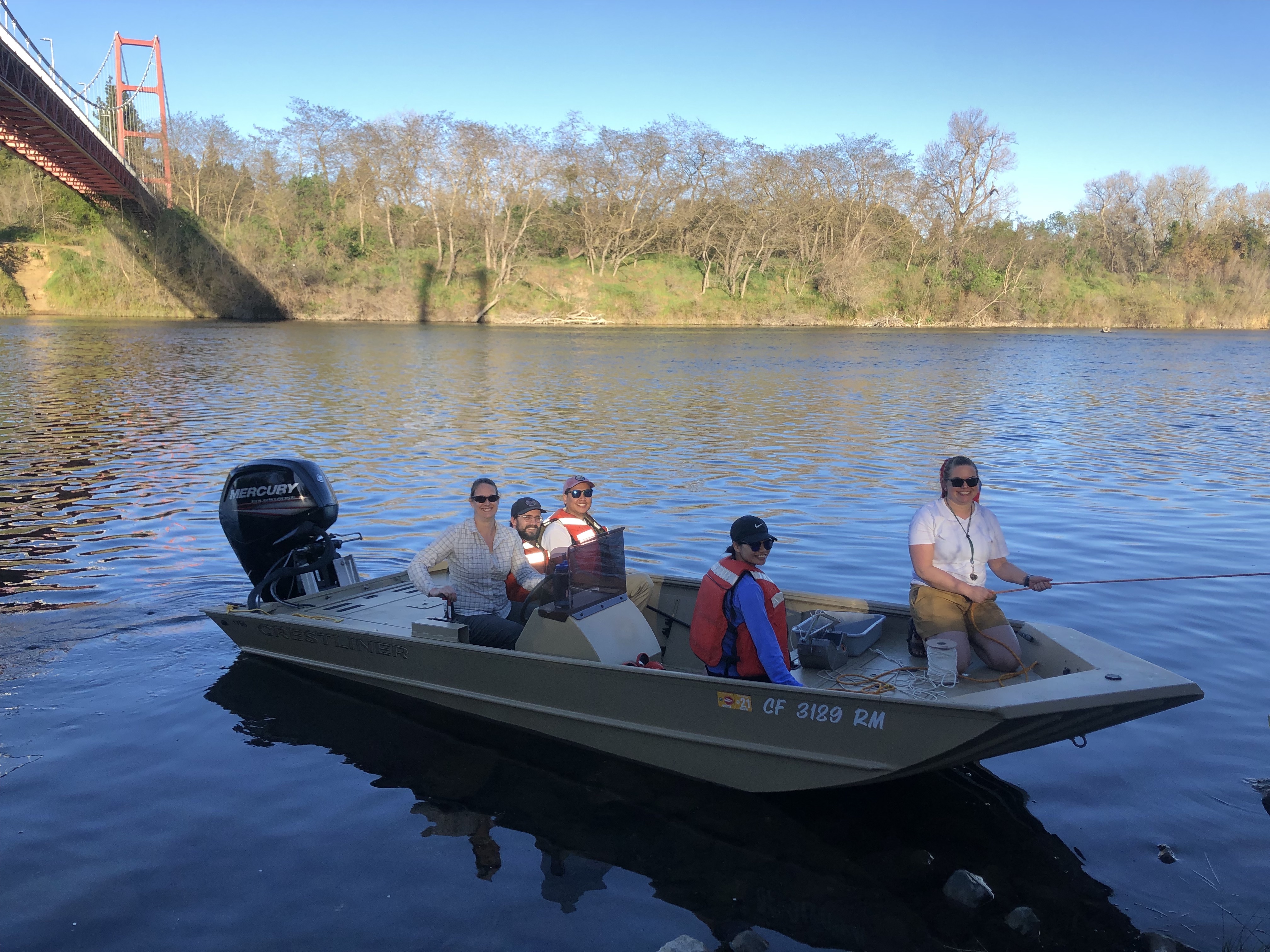
BUILDING THE FUTURE THROUGH RESTORATION
Professor Michelle Stevens, Environmental Studies, Spring 2022
Every spring, Professor Michelle Stevens from the Department of Environmental Studies at California State University, Sacramento incorporates a semester-long field work component into her Restoration Ecology course. A passionate environmental researcher herself, Stevens spearheaded the Bushy Lake Restoration Project in 2015. Located near Cal Expo by the American River, Bushy Lake is the site of an ongoing eco-cultural restoration project that provides students, faculty, and community members with various opportunities to participate in restoration projects and learn about authentic experimental design. Projects at Bushy Lake include ecological restoration, such as plant restoration that aims to use native plants to promote a fire-resistant landscape, and wildlife monitoring of numerous species, including the western pond turtle, the only remaining native freshwater turtle in California.
In June of 2021, a fire ravaged the Bushy Lake site. “It was devastating,” Stevens observed, “but then I saw the silver lining.” Fire-resilience is one of the overarching ecological goals at Bushy Lake and this unplanned natural experiment is allowing students this spring to actually study the effects of the fire on plant and animal species, including its impacts on plant survival and biomass, and on the turtle population after their nests burned.
When asked for their perspective on this authentic course format, compared to other classes, students noted that learning to organize an experiment was challenging, as was the uncertainty of wondering whether things were being done correctly without a set structure to rely on. Yet these challenges were also observed by students to be representative of the real world. And students were excited by this real-world approach, actually seeing first-hand what restoration work is like, or having the opportunity to watch a plant grow in a habitat instead of just reading about it in a book. Stevens herself has taught her course in a more traditional format, but has been conducting her authentic field experiences for a number of years. When asked to compare the two formats, she asserted, “It's 100% more work and it's 100% better teaching.”
So what motivates Stevens? “My favorite is just watching the sense of wonder on students’ eyes, and when I can, actually build someone into a functioning field biologist, a really good one, and see them get jobs and out in the world, that's really meaningful … it's exactly what SIRIUS II and ALEs are about.”
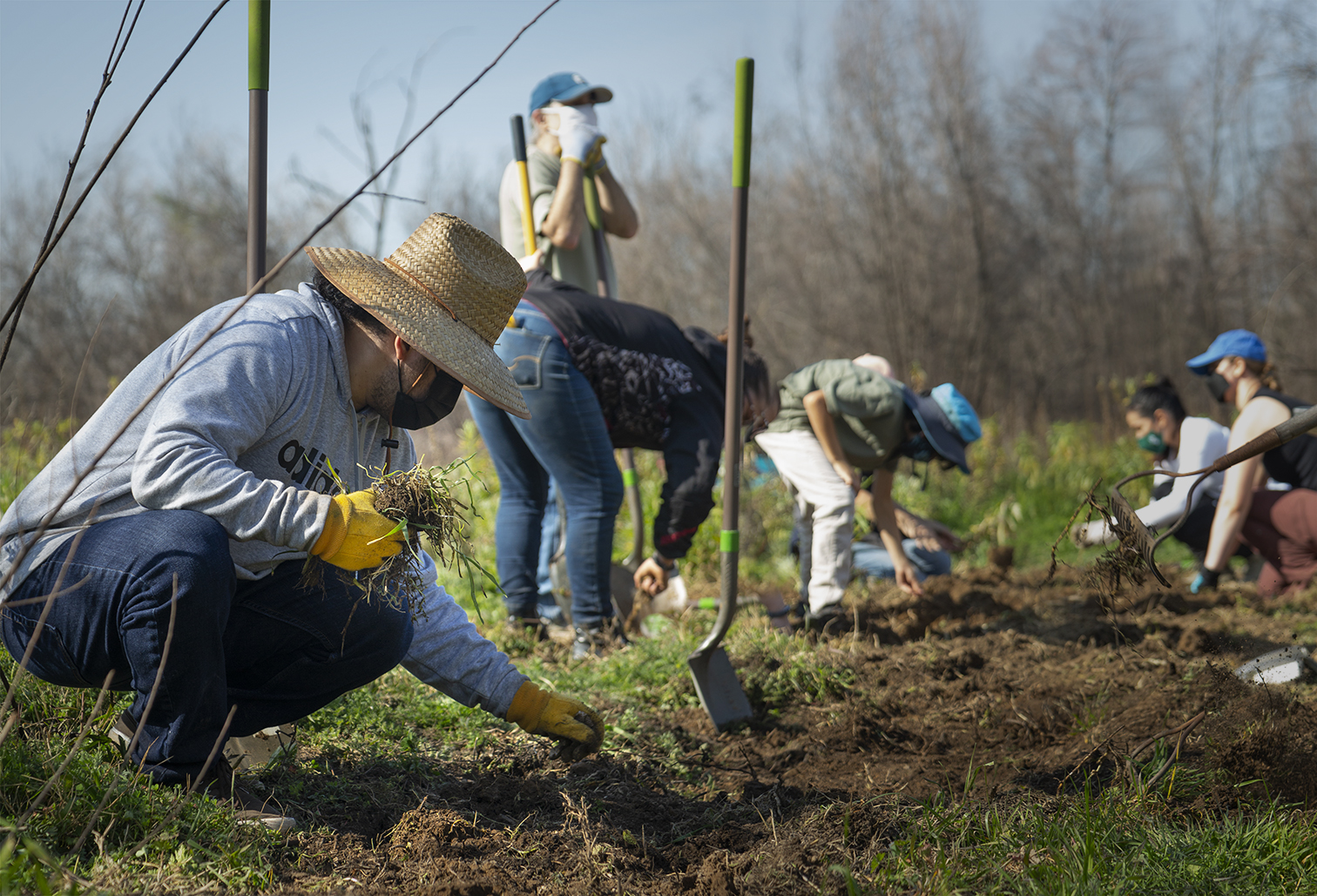
SNAKES, LIZARDS AND FROGS, OH MY!
Professor Clint Collins, Biology, Fall 2022
Students in Professor Clint Collins’ Amphibians and Reptiles class (BIO 164) got to explore and organize a “buried” treasure – Sacramento State’s herpetology collection. Creating a database for the collection of preserved reptiles and amphibians allowed students to contribute to their department while exploring taxonomy and geographic distribution of these scaly (and smooth) creatures. The database contains animpressive 250 entries, with taxonomic data and information about how specimens were collected (who, where, when). Students also used GIS resources to investigate how the Sacramento region herp habitat has changed in the last century. Through the course, they learned how difficult it is to precisely measure ecological and historical change while gaining a greater sense of connection to the surrounding environment and a connection to past students and faculty who collected the critters.
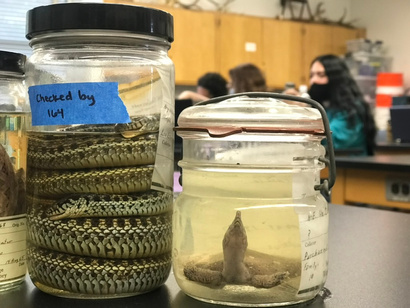
PROBING THE MURKY DEPTHS
Professors Michael Ray, Mikkel Jensen, and Eliza Morris, Physics, Fall 2022
We don’t often associate physics with improving the environment, but Professors Michael Ray and Mikkel Jensen are showing students how it is done. Students in an advanced Physics course (PHYS 116) designed instruments for measuring river properties (e.g., turbidity, temperature, depth, and flow). Successful instruments (pictured at right) were tested by students in an introductory Physics course (PHYS 11B) as they learned about optics, thermodynamics, and measures of instrumental uncertainty. Along with Eliza Morris, who helped to conceive the collaboration, Jensen and Ray are surveying students to gauge whether the ALE experience changes their view on physicists' role in solving environmental challenges. PHYS 11B students indicated that the project increased their awareness of how physics contributes to environmental research. We look forward to seeing how the next group of PHYS 116 students uses the testing data to improve designs that help us learn more about the physical properties of water in the American River!
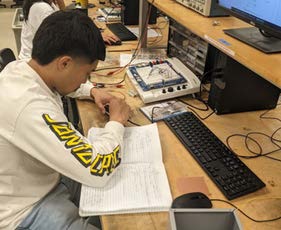
A LITTLE BACTERIA CAN GO A LONG WAY...
…more specifically, from a wastewater treatment plant and various local waterways into community college biology labs! Several SIRIUS II faculty are implementing ALEs related to bacteria in water.
Professors Eric Neff and Eli Carlisle, Biology, Fall 2022
Professors Neff and Carlisle are collaborating to bring the water quality theme to students in two courses at Consumnes River College (CRC): BIOL 440 Microbiology for Allied Health and nonmajors and BIOL 400 Principles of Biology for Biology majors. In BIOL 440, students isolate and quantify coliform bacteria from water samples collected from a local treatment facility, both before and after treatment has occurred. They then evaluate the colonies for sensitivity or resistance to antibiotics and disinfectants. BIOL 400 students use these same samples, but take a molecular approach to further identifying the bacteria in their pre- and post-treated water samples by extracting the DNA and using tools to determine the genetic sequences, and thus the diversity of microbes in the samples.
Professor Janet Hanstad, Biology, Fall 2022
Microbiology students in BIO 440 at American River College, most of whom are interested in nursing careers, used their aseptic skills and applied their
knowledge about microbes to an ALE related to public health. After learning about coliforms, water testing protocols, and the roles of local agencies in monitoring water quality, students collected water from various creeks, rivers, lakes and irrigation ditches. Then they cultured coliforms on Petri plates and followed up with various biochemical tests to confirm coliform identity. Professor Hanstad uses this course to introduce
students to health-related research, which could open up the possibility for new career paths.
